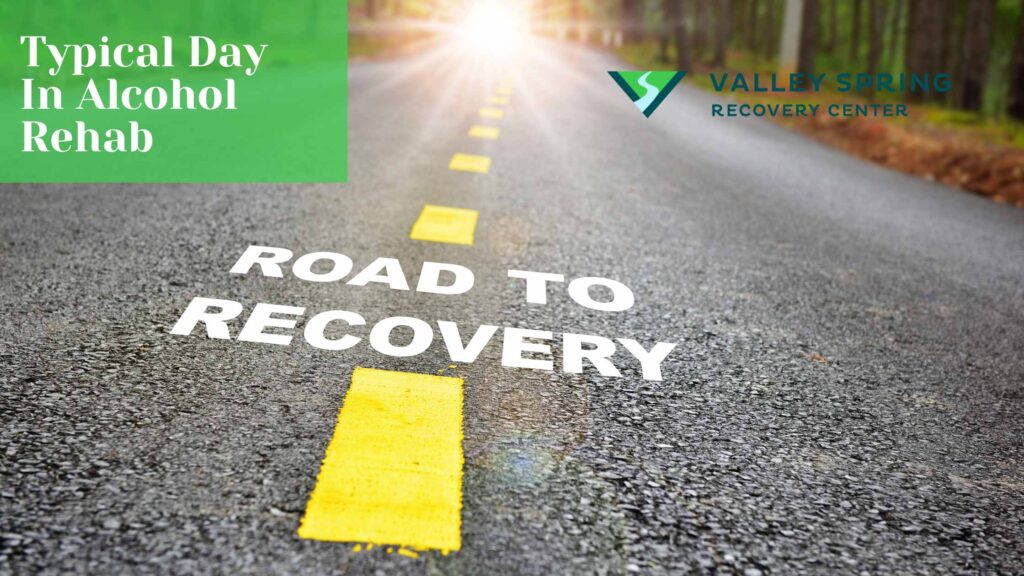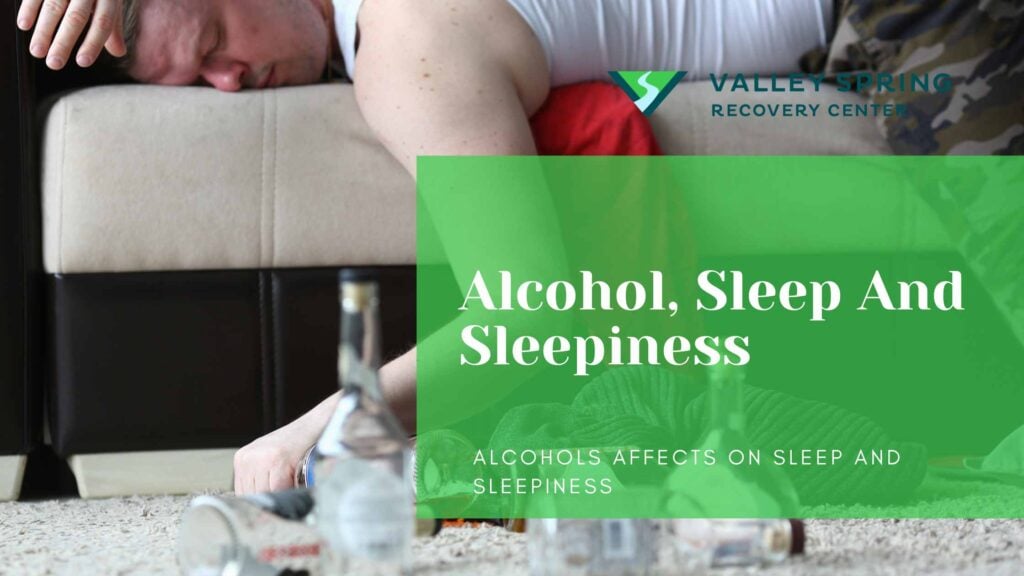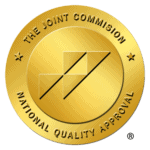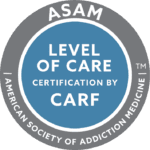Alcohol addiction is a relentless struggle impacting physical and mental health, relationships, and overall life. If you or a loved one are struggling with alcohol addiction, you’re not alone in this journey toward recovery and a brighter future. Many people overindulge in alcohol which can lead to blackouts, risky behavior, and abuse. Since alcohol is legal and extremely accessible, it has a high potential for abuse, in fact, the 2022 National Survey on Drug Use and Health (NSDUH), found that 29.5 million people ages 12 and older (10.5% in this age group) had an alcohol use disorder (AUD) in the past year.
The symptoms of alcohol addiction can vary depending on genetics and other factors. However, symptoms can range from increased tolerance to withdrawal symptoms, neglecting responsibilities, craving alcohol, and failed attempts to quit. Alcoholic drinkers experience blackouts, dizziness, and self-destructive character.
The causes of alcohol addiction include factors like genetics, trauma, stress, and peer pressure. Understanding what could have caused your alcohol addiction is a significant step toward finding the right path to recovery.
The effects of alcohol addiction encompass physical and mental health, erodes relationships, leads to financial struggles, and can rob you or your loved one of the joy and fulfillment in life.
What is Alcohol Addiction?
Alcohol addiction, also known as alcoholism or alcohol use disorder (AUD), is a chronic condition characterized by an inability to control alcohol consumption despite adverse consequences.
Alcohol is a central nervous system depressant, making it a drug in the same class as substances like benzodiazepines and barbiturates. People with alcohol addiction will experience physical and psychological dependence on alcohol, often leading to tolerance, a compulsive need to drink, withdrawal symptoms when not drinking, and a range of harmful effects on life, health, and relationships.
Alcohol addiction is a prevalent form of addiction in the US and other parts of the world. In fact, In the 2021 National Survey on Drug Use and Health (NSDUH), it was found that approximately 29.5 million individuals aged 12 and older, representing about 10.6% of this age group, experienced Alcohol Use Disorder (AUD) within the past year: {National Institute on Alcohol Abuse and Alcoholism (NIAAA)}.

What are the signs and symptoms of Alcohol addiction?
The signs and symptoms of alcohol addiction vary based on genetics, consumption rate, and duration of drinking, from mild, moderate, or severe. The main symptoms of alcohol withdrawal are listed below.
- Loss of Control: Alcohol addiction results in consuming alcohol beyond one’s intended limit and for extended periods, often accompanied by failed efforts to moderate or cease consumption.
- Craving: A compelling and ongoing urge to drink alcohol characterizes addiction.
- Tolerance: Addiction manifests as either a need for substantially more alcohol to achieve intoxication or a markedly diminished effect with continued use of the same alcohol amount.
- Withdrawal: Symptoms emerge when not consuming alcohol to alleviate or avoid withdrawal indicators.
- Neglecting Responsibilities: Alcohol Use Disorder (AUD) hampers the ability to meet critical obligations at work, school, or home.
- Social and Recreational Activities: Alcohol consumption leads to the neglect or reduction of significant social, occupational, or recreational pursuits.
- Time Spent: A considerable portion of time is dedicated to acquiring, using, or recuperating from alcohol’s effects.
- Continued Use Despite Problems: Alcohol consumption persists despite its contribution to physical or psychological issues.
- Loss of Interest: Alcohol use causes a diminished interest or participation in once-valued or enjoyable activities.
- Risk-Taking: Risky behavior, including driving under the influence or engaging in unprotected sex, is a common occurrence.
- Legal Issues: Legal problems, such as charges for Driving Under the Influence (DUI), arise due to alcohol use.
How does alcohol Use Disorder affect the brain?
Below is a breakdown of how alcohol affects the brain according to Dr Michael Olla:
- Depressant Effect: Alcohol is a central nervous system depressant, slowing down brain activity. It inhibits the transmission of signals between nerve cells, leading to reduced brain function.
- Neurotransmitter Modulation: Alcohol increases the activity of inhibitory neurotransmitters like GABA while suppressing excitatory neurotransmitters like glutamate. This shift in neurotransmitter balance results in sedation and reduced brain stimulation.
- Dopamine Release: Alcohol prompts the release of dopamine, a neurotransmitter associated with pleasure and reward. This release creates feelings of euphoria and reinforces the desire to drink more.
- Impaired Cognitive Function: Alcohol impairs cognitive functions such as judgment, decision-making, and memory, directly affecting an individual’s ability to think clearly and make rational choices.
- Motor Skills and Coordination: Alcohol impairs motor skills and coordination, leading to observable symptoms like slurred speech, impaired balance, and reduced motor control.
- Memory Formation: Excessive alcohol consumption can interfere with forming new memories, resulting in blackouts or memory lapses.
- Structural Changes: Long-term, heavy alcohol use can lead to structural changes in the brain, including brain shrinkage, particularly in regions associated with memory and cognition.
A team of Harvard researchers led by Dr. Kenneth J. Mukamal in discovered in 2001 that brain volume decreases relative to alcohol intake. Surprisingly, even light and moderate drinkers exhibited more atrophy (shrinkage) compared to those who abstained from alcohol.
What are the causes of Alcohol addiction?
Alcohol addiction is a complex condition with multiple potential causes including genetics, social, psychological, and environmental factors, some drinkers do not become addicted, no matter how much they consume. Some of the causes of alcohol addiction are:
- Genetics: Research indicates that genetic predisposition significantly influences susceptibility to alcohol addiction. Individuals with familial histories of alcoholism are at elevated risk, as detailed by the National Institute on Alcohol Abuse and Alcoholism (NIAAA) in their examination of alcohol’s effects on health.
- Environmental Factors: The environment surrounding an individual’s upbringing plays a pivotal role in the risk of Alcohol Use Disorder (AUD). Key factors include early alcohol exposure, familial and peer attitudes towards drinking, and alcohol accessibility.
- Psychological Factors: Pre-existing mental health issues such as depression, anxiety, trauma, or stress are known to heighten alcohol addiction risks. Alcohol often becomes a coping mechanism for managing emotional pain.
- Social and Cultural Factors: Societal and cultural perceptions and norms around alcohol consumption affect drinking behaviors. In certain cultures, heavy drinking might be more widely accepted or even encouraged.
- Neurochemical Factors: Alcohol consumption alters brain chemistry by affecting neurotransmitter functions. These alterations can lead to dependency, underscoring the neurochemical underpinnings of addiction.
- Early Exposure: Initiating alcohol consumption at a young age is linked to a higher propensity for developing AUD. Alcohol’s impact during critical developmental phases can result in enduring consequences.
- Peer Pressure: Social influences, particularly from peers, can significantly affect individual drinking patterns, promoting or normalizing excessive alcohol intake.
- Availability: The ease of obtaining alcohol, influenced by factors such as age, locale, or social settings, plays a crucial role in fostering problematic drinking behaviors.

What are the effects of Alcohol Abuse?
The effects of alcohol addiction can be detrimental to your health, social life, and mind. These effects can be difficult to overcome, but with the right treatment options and support system, they can be reversed. Alcohol also affects family members of alcoholics, in a recent study from the Substance Abuse and Mental Health Services Administration (SAMHSA), approximately 10.5% (7.5 million) of U.S. children ages 17 and younger live with a parent who has alcohol use disorder.
- Physical Health Deterioration: Alcohol addiction can lead to liver damage (cirrhosis), cardiovascular problems (heart diseases), gastritis, and pancreatitis. It weakens the immune system, making the body more susceptible to infections.
- Liver Damage: Of the 100,530 liver disease deaths among people ages 12 and older in 2021, 47.4% involved alcohol. Among males, 62,039 liver disease deaths occurred, with 50.2% involving alcohol. Among females, 38,491 liver disease deaths occurred, with 42.8% involving alcohol. (CDC Alcohol-Related Disease Impact Report) and from 2010 to 2016, alcohol-associated liver disease was the primary cause of almost 1 in 3 liver transplants in the United States according to JAMA Intern Med. study conducted in 2019.
- Cirrhosis: Among all cirrhosis deaths in 2019, alcohol accounted for 50.3%. The percentage of alcohol-associated cirrhosis deaths was highest (at 80.9%) among adults ages 25 to 34, followed by adults ages 35 to 44 (at 75.4%) from NIAAA, Division of Epidemiology and Prevention Research; 2022.
- Cancer: Recent estimates for the United States indicate that 5.6% of cancer cases and 4.0% of cancer deaths are attributable to alcohol consumption as stated in Islam F’s study in CA Cancer J Clin. from 2018.
- Mental Health Problems: It often co-occurs with depression, anxiety, and even severe conditions like alcohol-induced psychosis. Mental health can deteriorate due to alcohol’s impact on brain chemistry.
- Relationships: Alcohol addiction strains relationships through erratic behavior, neglect, and conflicts. It can result in broken families and severed friendships.
- Work and Finances: Job performance declines, leading to job loss and financial difficulties. Money spent on alcohol can deplete savings and contribute to debt.
- Legal Issues: Drunk driving arrests, public intoxication, and other legal problems are common. Legal consequences can include fines, license suspension, and even imprisonment.
- Social Isolation: Individuals often withdraw from social circles and hobbies, prioritizing alcohol consumption over social interactions.
- Physical Dependence: Withdrawal symptoms like tremors, nausea, and seizures occur when alcohol isn’t consumed, reinforcing the need to drink regularly.
- Tolerance and Health Risks: Tolerance means needing more alcohol for the same effects, which can lead to higher health risks like overdose and organ damage.
- Neglecting Responsibilities: Alcohol addiction can lead to neglecting work, family, and personal responsibilities, causing harm to one’s life and those around them.
- Accidents and Injuries: Impaired coordination and judgment increase the risk of accidents, injuries, and falls, often requiring medical attention. Alcohol consumption is associated with an increased risk of drowning and injuries from violence, falls, and motor vehicle crashes. (Driscoll TR, Pubmed 2004)
- Financial Impact: The deeper you go into alcohol addiction, the more you want to drink it and the more money you spend on it. This could affect your finances.
| Effect of AUD | Description |
|---|---|
| Physical Health Deterioration | Alcohol addiction leads to liver damage, cardiovascular problems, gastritis, pancreatitis, and weakened immunity. |
| Liver Damage | A significant cause of liver disease deaths, with 47.4% of liver disease deaths involving alcohol as of 2021. Alcohol-associated liver disease was the primary cause of nearly 1 in 3 liver transplants in the United States. |
| Cirrhosis | Cirrhosis deaths are highly alcohol-related, particularly among younger adults. In 2019, alcohol accounted for 50.3% of all cirrhosis deaths, with the highest rates among adults ages 25 to 34. |
| Cancer | Approximately 5.6% of all cancer cases and 4.0% of cancer deaths in the United States are attributable to alcohol consumption. |
| Mental Health Problems | Alcohol use often co-occurs with mental health issues such as depression, anxiety, and alcohol-induced psychosis. There is a strong link between alcohol use and mental health disorders. |
| Relationships | Alcohol addiction strains relationships through erratic behavior, neglect, and conflicts, often leading to an unhappy and sometimes violent environment. Substance use can create a vicious cycle of conflict and further substance use to reduce stress. |
| Work and Finances | Alcohol abuse significantly impacts work and finances, leading to job loss and financial difficulties. In 2010, the cost of excessive alcohol use in the U.S. was estimated at $249 billion, primarily due to losses in workplace productivity. |
| Legal Issues | Alcohol addiction is frequently associated with legal problems such as drunk driving arrests and public intoxication, leading to various legal consequences including fines and imprisonment. |
| Social Isolation | Individuals with AUD often withdraw from social circles and activities, prioritizing alcohol consumption over social interactions. |
| Physical Dependence | Alcohol addiction leads to physical dependence, with withdrawal symptoms like tremors and nausea occurring when alcohol consumption is stopped. |
| Tolerance and Health Risks | Increased tolerance to alcohol can lead to higher health risks, including the risk of overdose and organ damage. |
| Neglecting Responsibilities | AUD often results in neglecting work, family, and personal responsibilities, causing widespread harm and deterioration in various aspects of life. |
| Accidents and Injuries | Alcohol consumption increases the risk of accidents, injuries, and falls, often requiring medical attention. It is associated with a higher risk of drowning, violence, falls, and motor vehicle crashes. |
| Financial Impact | The financial burden of alcohol addiction includes not only healthcare costs but also lost productivity and legal expenses. Individuals with AUD often experience financial strain due to increased spending on alcohol. |
| Impact on Children | Children living with a parent with AUD are significantly affected, with around 10.5% of U.S. children living in such households. These children often face unique challenges and risks related to the family environment. |
These specific consequences underscore the urgent need for early intervention, treatment, and support. If you’ve started to notice a combination of these effects due to your alcohol drinking problem, you should consider visiting a specialist.
What are the types of Alcoholics?
According to Dr. Moss et al., for the National Institute of Health (NIH), there are five different types of alcohol addiction, and they’re broken into the following categories:
1. Young Adult Subtype
Representing 31.5 percent of U.S. alcoholics, this group consists of young adults with low rates of co-occurring substance abuse and mental disorders. They have a minimal family history of alcoholism and rarely seek help for their drinking issues.
2. Young Antisocial Subtype
Comprising 21 percent of U.S. alcoholics, these individuals are typically in their mid-twenties, began drinking early, and have high rates of alcohol problems. Over half come from families with a history of alcoholism, and many have a diagnosis of Antisocial Personality Disorder. Co-occurring conditions include major depression, bipolar disorder, and anxiety disorders. A significant portion also engage in cigarette and marijuana smoking and have experienced cocaine and opiate addiction. Approximately one-third seek treatment for their alcohol addiction.
3. Functional Subtype
Accounting for 19.5 percent of U.S. alcoholics, this group is typically middle-aged, well-educated, and leads stable lives with jobs and families. About one-third have a family history of alcoholism spanning generations, and around one-quarter have experienced major depressive episodes. Nearly half are cigarette smokers.
4. Intermediate Familial Subtype
Comprising 19 percent of U.S. alcoholics, this group is middle-aged, and about half have a family history of multigenerational alcoholism. Almost half have experienced clinical depression, and 20 percent have a history of bipolar disorder. The majority are cigarette smokers, and nearly one in five have faced issues with cocaine and marijuana use. Only 25 percent have sought treatment for their alcohol problems.
5. Chronic Severe Subtype
Representing 9 percent of U.S. alcoholics, this group consists mostly of middle-aged individuals who started drinking and experiencing alcohol-related issues at an early age. They have high rates of Antisocial Personality Disorder and criminal behavior. Nearly 80 percent come from families with multigenerational alcoholism.
They also exhibit the highest rates of other psychiatric disorders, including depression, bipolar disorder, and anxiety disorders. Smoking is prevalent, and many have faced issues with marijuana, cocaine, and opiate dependence. Two-thirds of these individuals seek treatment for their alcohol problems, making them the most common subtype in treatment programs.
Treatment For Alcohol Use Disorder
What are the Treatment Options for Alcohol Addiction?
There are multiple different types of treatment depending on what part or stage of alcohol use disorder is present. However, despite available treatment options for alcoholism, less than 10% of people with AUD receive treatment, specifically, 1.4 million people ages 12 and older received alcoholism treatment which accounts for 4.6% of people with past-year AUD according to the 2021 National Survey on Drug Use and Health (NSDUH). Treatment options can range from inpatient residential to outpatient drug and alcohol rehab programs. Some of these treatment options are similar to those for addiction to other drugs. They include:
- Detoxification (Detox): The first step in treating alcohol addiction is often detox, which involves supervised withdrawal to manage the physical symptoms and cravings. Medications are used to ease withdrawal discomfort and reduce the risk of severe symptoms like seizures or delirium tremens.
- Medication-Assisted Treatment (MAT): Certain medications, such as naltrexone, acamprosate, and disulfiram are prescribed as part of ongoing treatment. These medications can help reduce cravings, deter alcohol use, or alleviate symptoms of withdrawal.
- Behavioral Therapies: Various forms of therapy, such as cognitive-behavioral therapy (CBT), motivational enhancement therapy (MET), and contingency management, are used to address the psychological aspects of addiction. These therapies help individuals identify triggers, develop coping strategies, and change behaviors associated with alcohol use.
- Support Groups: Participation in support groups like Alcoholics Anonymous (AA) can provide a sense of community and peer support. These groups follow a 12-step program to help individuals maintain sobriety.
- Counseling and Psychotherapy: Individual and group counseling sessions can address underlying emotional and psychological factors contributing to addiction. These sessions provide a safe space to explore issues related to alcohol use and develop healthier coping mechanisms.
- Residential Treatment (Inpatient): In some cases, individuals require intensive treatment in a residential facility, receiving 24-hour care and support. This is typically recommended for severe addiction cases.
- Outpatient Treatment: Outpatient programs offer flexibility, allowing individuals to receive treatment while living at home. These programs can include therapy, counseling, and medication management.
- Family Therapy: Involving the family in treatment can be beneficial to address family dynamics and support the recovery process.
- Holistic Approaches: Some individuals find benefit in holistic treatments such as yoga, meditation, and mindfulness practices to manage stress and promote overall well-being during recovery.
- Aftercare and Relapse Prevention: Aftercare plans are essential to maintain sobriety once formal treatment is complete. This includes ongoing therapy, support group participation, and strategies for relapse prevention.
How long does it take to detox from Alcohol Addiction?
The duration of alcohol detoxification can vary significantly from person to person and depends on several factors, including the severity of the alcohol addiction, your overall health, and the specific detox protocol used. Detoxification from alcohol addiction can take between 24 hours to weeks: {Rachel Nall, MSN, CRNA: Healthline}.
In general, the process typically unfolds as follows:
- Immediate Withdrawal (Within Hours to Days): The initial withdrawal symptoms usually begin within hours to a few days after the last drink. These symptoms can include anxiety, nausea, sweating, tremors, and insomnia. For some, more severe symptoms like seizures or delirium tremens (DTs) can occur.
- Acute Detox (3 to 7 Days): This phase is characterized by the most intense withdrawal symptoms, typically occurring within the first week. Medical supervision is often necessary during this time to manage symptoms and prevent complications. Medications are administered to ease withdrawal discomfort and reduce the risk of seizures or DTs.
- Post-Acute Withdrawal Syndrome (PAWS): After the acute detox phase, some individuals who experience a prolonged period of less severe but lingering symptoms, known as PAWS. This includes mood swings, sleep disturbances, and cravings. PAWS can persist for weeks or even months.
- Recovery and Rehabilitation: Detox is just the first step in alcohol addiction treatment. Recovery and rehabilitation involve addressing the psychological and behavioral aspects of addiction and typically extend well beyond the detox period. This phase can last for months or years, depending on the individual’s progress and needs.
It’s crucial to emphasize that detox is only the initial phase of alcohol addiction treatment. While some individuals complete detox in a matter of days, the overall process of achieving and maintaining sobriety often requires ongoing support, therapy, and lifestyle changes. Seeking professional help and medical supervision during detox is essential for safety and increased chances of long-term recovery.
Is Alcohol A Drug?
Alcohol is a type of legal drug that can be purchased by anyone over the age of 21 years old in the United States, but it is a mood and mind-altering substance like any other drug. When discussing addiction, the terms “drug” and “alcohol” are often separated as if they belong to different categories. However, it’s essential to understand that alcohol is a drug—just like any other mood or mind-altering substance.
The separation often stems from social and cultural perceptions that view alcohol as more “acceptable” or “less dangerous” than other types of drugs. However, this distinction is not only inaccurate but also harmful, as it can minimize the severity of alcohol-related issues.
How effective is alcohol rehab?
Rehabilitation for alcohol, often referred to as alcohol rehabilitation or alcohol rehab, is a treatment process designed to help individuals who struggle with alcohol use disorder (AUD) or alcoholism. The primary goal of alcohol rehabilitation is to enable these individuals to stop using alcohol, improve their health and well-being, and maintain sobriety in the long term. Key components of alcohol rehabilitation typically include:
- Detoxification (Detox): The first step in many alcohol rehabilitation programs, detox involves the safe elimination of alcohol from the body. It is often medically supervised to manage withdrawal symptoms, which can range from mild to severe.
- Therapy and Counseling: This involves various forms of psychological therapy. Individual counseling, group therapy, and family therapy are common. These sessions aim to address the underlying causes of alcohol addiction, such as behavioral patterns, psychological issues, and social factors.
- Education: Patients are educated about alcohol addiction, its effects on health and life, and the process of recovery. This helps in understanding the nature of addiction and the importance of maintaining sobriety.
- Medication: In some cases, medications are used to manage withdrawal symptoms, reduce cravings, or treat co-occurring mental health conditions like anxiety or depression.
- Relapse Prevention Training: This includes learning skills and strategies to avoid relapse after leaving the rehabilitation program. It often involves developing healthy coping mechanisms, stress management techniques, and lifestyle changes.
- Aftercare Support: Ongoing support after completing a rehab program is crucial. This can include outpatient therapy, support groups like Alcoholics Anonymous (AA), and follow-up sessions.
- Holistic Approaches: Some programs also include holistic treatments like yoga, meditation, art therapy, or acupuncture to support overall well-being.
The duration and intensity of alcohol rehabilitation can vary depending on the severity of the addiction and individual needs. Alcohol Rehab programs can range from short-term outpatient treatments to long-term residential stays. The key to successful rehabilitation is a personalized approach that addresses all aspects of an individual’s life affected by alcohol addiction.
What are the different types of alcohol rehab programs?
Alcohol rehabilitation encompasses a variety of program types to address the diverse needs of individuals struggling with alcohol use disorder. Inpatient rehab programs provide a highly structured and intensive treatment environment where patients reside at the facility, ideal for those with severe addiction or co-occurring mental health conditions.
Outpatient alcohol rehab programs, in contrast, allow individuals to live at home and maintain daily responsibilities while attending regular treatment sessions, suitable for mild to moderate addiction cases. Detoxification programs are often the initial step, focusing on safely managing withdrawal symptoms. Partial Hospitalization Programs (PHPs) offer a balance between inpatient and outpatient care, requiring several hours of treatment daily at the center but allowing patients to return home at night. Intensive Outpatient Programs (IOPs) demand more frequent and longer sessions than standard outpatient care. Sober Living Homes provide a structured, substance-free environment for those transitioning from inpatient rehab or needing a supportive living space.
12-Step Programs, such as Alcoholics Anonymous, emphasize a step-by-step recovery approach with a strong peer support component.
Lastly, holistic programs integrate alternative therapies like yoga and acupuncture with conventional treatment methods, focusing on the overall wellbeing of the individual.
The type of alcohol rehab program that is best suited for an alcoholic searching for recovery support or a family member searching for support for a loved one typically depends on the severity of the addiction, individual circumstances, and personal commitments, ensuring a tailored approach to recovery.
What withdrawal symptoms are associated with Alcohol addiction?
Withdrawing from medications or stimulants, including alcohol, often presents significant challenges and can lead to serious health risks without expert supervision. The detoxification process can trigger a range of withdrawal symptoms, some of which escalate into medical emergencies. It’s important to recognize these symptoms and understand their potential severity.
Common Withdrawal Symptoms:
- Anxiety: A frequent emotional response during detox.
- Nausea and Vomiting: Often experienced in the early stages.
- Tremors (Shakes): A physical manifestation of withdrawal.
- Sweating: A common bodily reaction.
- Insomnia: Difficulty in sleeping is typical.
- Increased Heart Rate: A sign of the body’s response to withdrawal.
- Mood Swings: Fluctuations in emotional state.
- Headaches: A common physical symptom.
- Seizures: A severe and dangerous possibility.
- Hallucinations: Occur in more severe cases.
- Delirium Tremens (DTs): A potentially life-threatening condition.
The severity of alcohol withdrawal symptoms can range from mild to severe and largely depends on the individual’s physical and mental health, as well as the duration and amount of substance use. Understanding these factors is crucial in managing withdrawal symptoms safely and effectively.
Sources
Ben Fisher
All author postsShare This Post










